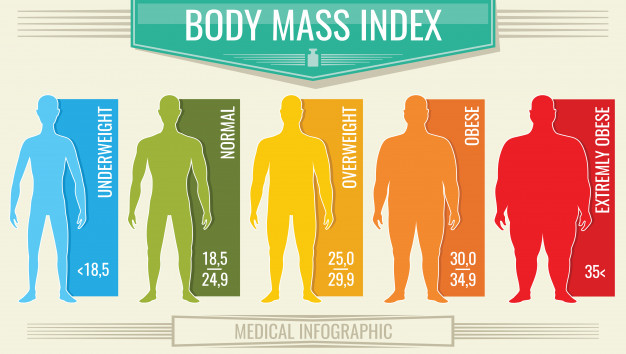
Body Mass Index or BMI has been used for over a century to find out whether the person is underweight or overweight. Doctors usually use this way of calculation to find out the health status of the population in large quantities. BMI is an individual’s weight in kilograms divided by the square of his/her height in metres. Based on the measurement, it is categorized under groups like underweight, healthy, overweight, and obese.
BMI measurement can act as a screening tool but cannot be used to diagnose the fatness of the body or a person’s health. To find health risks on the basis of BMI, the healthcare provider has to perform further assessments like skinfold thickness, physical activity, evaluations of diet, and family history. The formula to calculate BMI is the same for both adults and children. The calculations are made based on the following formula:
| Measurement Units | Formula and Calculation |
| Kilograms and metres (or centimetres) | Formula: weight (kg) / [height (m)]2
With the metric system, the formula for BMI is weight in kilograms divided by height in metres squared. Because height is commonly measured in centimetres, divide height in centimetres by 100 to obtain height in metres. Example: Weight = 68 kg, Height = 165 cm (1.65 m) |
| Pounds and inches | Formula: weight (lb) / [height (in)]2 x 703
Calculate BMI by dividing weight in pounds (lbs) by height in inches (in) squared and multiplying by a conversion factor of 703. Example: Weight = 150 lbs, Height = 5’5″ (65″) |
Although BMI is not always the best way to calculate overall health for specific cases discussed below:
- Asians – BMI measurement is not a great option for Asians as they see health risks before their weight and height calculations qualify as overweight, which is BMI of 25 or more.
- Athletes – Athletes have a very active lifestyle. Thus, they have heavier bones and lean mass, which results in higher body weights and higher BMI. Although lean muscle mass is said to increase metabolism and keep away diseases like type 2 diabetes and heart diseases. This means that an athlete can be perfectly healthy despite showing higher BMI.
- Pregnant and nursing women – Women usually gain weight and increase body fat percentage when pregnant or nursing. This is necessary to keep the baby healthy and away from health risks.
- Women – Compared to men, women tend to have a higher percentage of body fat. Hence, gender needs to be taken in consideration as well.
- Senior citizens – Generally, BMI less than 23 is considered a health risk for senior citizens. People with lower BMI carry fewer pounds of muscle, which can affect their overall immunity.
BMI doesn’t take into account excess body fat, which is an important factor in indicating the health status of a person. People have also suggested other effective ways like MRI scans to measure body fat. It is expensive but can give more accurate results.











